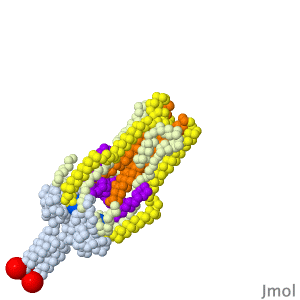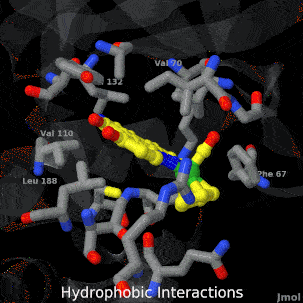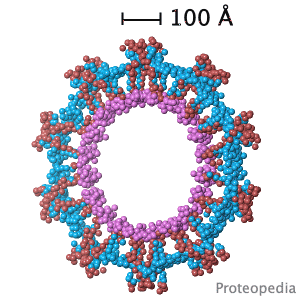Main Page
From Proteopedia
| Line 4: | Line 4: | ||
<span style="border:none; margin:0; padding:0.3em; color:#000; font-style: italic; font-size: 1.4em;"> | <span style="border:none; margin:0; padding:0.3em; color:#000; font-style: italic; font-size: 1.4em;"> | ||
| - | <b>As life is more than 2D</b>, Proteopedia helps to bridge the gap between 3D structure & function of biomacromolecules | + | <b>As life is more than 2D</b>, '''Proteopedia''' helps to bridge the gap between 3D structure & function of biomacromolecules |
</span> | </span> | ||
<span style="border:none; margin:0; padding:0.3em; color:#000; font-style: italic; font-size: 1.1em;max-width:80%;display:block;"> | <span style="border:none; margin:0; padding:0.3em; color:#000; font-style: italic; font-size: 1.1em;max-width:80%;display:block;"> | ||
| - | + | '''Proteopedia''' presents this information in a user-friendly way as a '''free, collaborative 3D-encyclopedia of proteins & other biomolecules.''' | |
</span> | </span> | ||
Revision as of 14:18, 20 January 2019
|
ISSN 2310-6301
As life is more than 2D, Proteopedia helps to bridge the gap between 3D structure & function of biomacromolecules Proteopedia presents this information in a user-friendly way as a free, collaborative 3D-encyclopedia of proteins & other biomolecules.
| ||||||||
| Selected Pages | Journals | Education | ||||||
|---|---|---|---|---|---|---|---|---|
|
|
|
||||||
|
How to add content to Proteopedia Who knows ... |
Teaching strategies using Proteopedia |
|||||||
| ||||||||




